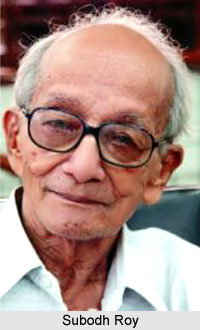 Subodh Roy, also known as Jhunku, was among the noteworthy Indian revolutionaries and a Bengali independence activist, as well as a politician. He was a member of the armed resistance movement, which was under the leadership of Master Da Surya Sen. Roy was the youngest participant of the Indian Republican Army that was a revolutionary group in Chittagong included various Indian revolutionaries and Indian freedom fighters who conducted and participated in the well known Chittagong Armoury Raid Case during 1930- 1931. He had been in the first batch that was sentenced at the age of 14. After the trial, he was deported to the Cellular Jail in Port Blair in the year 1934.
Subodh Roy, also known as Jhunku, was among the noteworthy Indian revolutionaries and a Bengali independence activist, as well as a politician. He was a member of the armed resistance movement, which was under the leadership of Master Da Surya Sen. Roy was the youngest participant of the Indian Republican Army that was a revolutionary group in Chittagong included various Indian revolutionaries and Indian freedom fighters who conducted and participated in the well known Chittagong Armoury Raid Case during 1930- 1931. He had been in the first batch that was sentenced at the age of 14. After the trial, he was deported to the Cellular Jail in Port Blair in the year 1934.
Early Life of Subodh Roy
Subodh Roy was born in the year 1916 in the district of Chittagong, Bengal Province that was under the rule of the British Empire in India. He was born in a rich family at Chittagong in the former undivided Bengal. He was adoringly called Jhunku by his family and close friends.
Revolutionary Activities of Subodh Roy
Subodh Roy joined the Indian revolutionaries and became a member of the Indian Republican Army. He participated in the Chittagong Armoury Raid on April 18, 1930. The armoury raid in Chittagong was one of the most valiant and heroic revolutionary endeavours in the history of the Indian freedom struggle that was devised by the youths of the region. The attack was conducted on 18th April 1930 to raid the armoury of police and auxiliary forces from the Chittagong in Bengal province during the rule of the British Empire in India. The Indian Republican Army was led by Masterda Surya Sen and other prominent members included Kalpana Dutta, Pritilata Waddedar, Anand Gupta, Jiban Ghoshal, Ananta Singh, Tarakeswar Dastidar, Harigopal Bal (Tegra), Ardhendu Dastidar, Sasanka Datta, Naresh Roy, Ambika Chakrobarty, Subodh Roy, Nirmal Sen, Lokenath Bal and Ganesh Ghosh.
The renowned independence activist Subodh Roy stole a .303 gun and a supply of bullets from the locker of his father after obtaining duplicate keys. The gun was continually used till the revolutionaries ran out of bullets on the hills and rolling lands around Chittagong town. At the time he was merely 13 years of age and still fought equally along with the other armed revolutionaries in the group of Surya Sen. He succeeded in warding off the chasing British Indian army troops by brutal rear-guard action, which allowed his comrades to survive the ordeal. He was later detained and tortured by the British Indian police in order to extract confession. Subodh Roy was primarily sentenced to be hanged but was eventually sent to Andaman as the youngest detenue. Inside the prison, Subodh Roy, along with other revolutionaries, formed a Communist Group. After he was released from prison in the year 1940, he joined communist politics and became a member of the Communist Party of India.
Later Life of Subodh Roy
After the nation attained freedom from the British and the partition of India, Subodh Roy moved to Calcutta (now Kolkata) and joined the Provincial Centre of the Party. After the segregation of the Communist Party of India in the year 1964, he supported the Communist Party of India (Marxist). Subodh Roy was also a member of the West Bengal state committee of the CPI(M). Subodh Roy died in the year 2006 in Kolkata, India



















